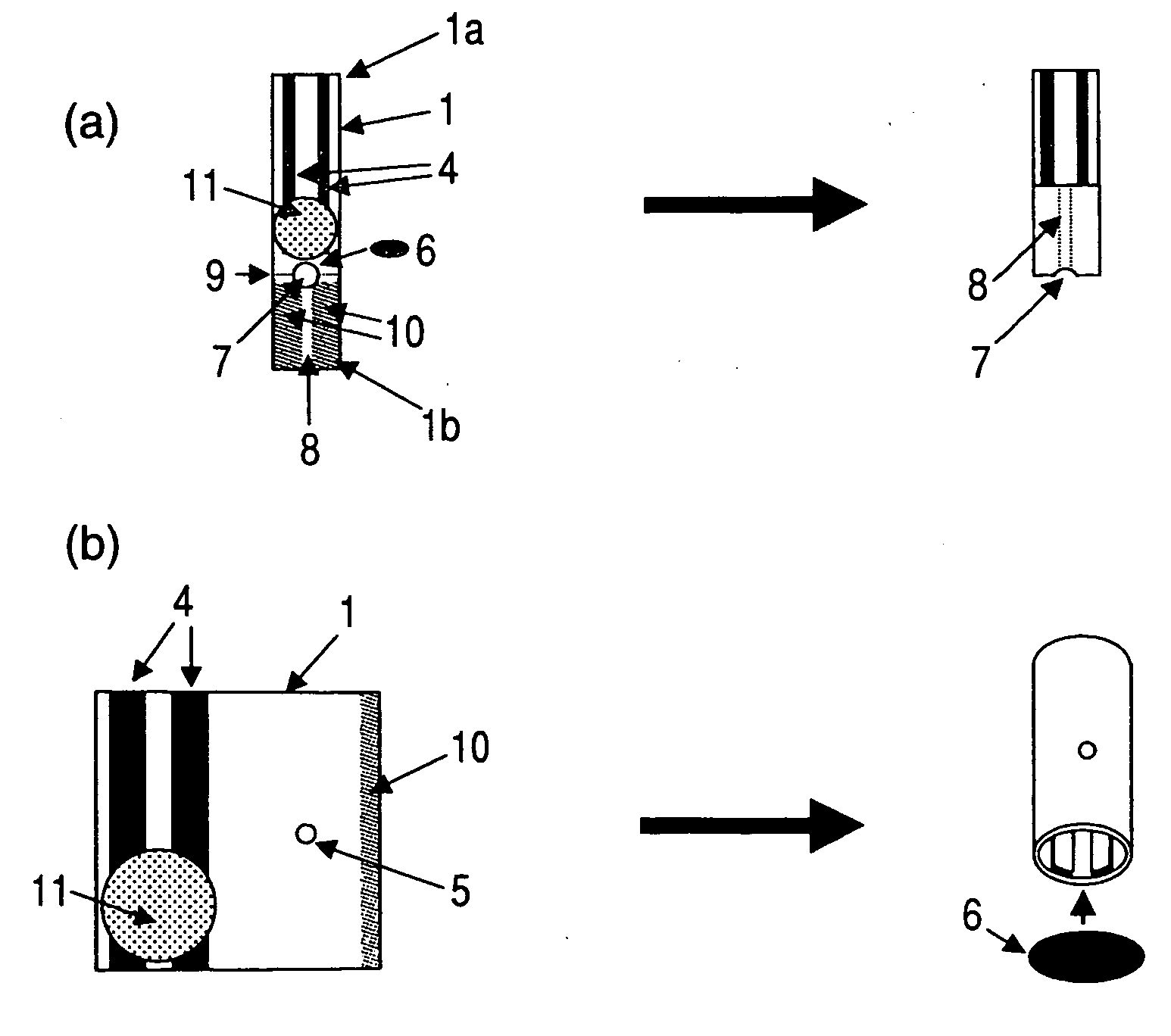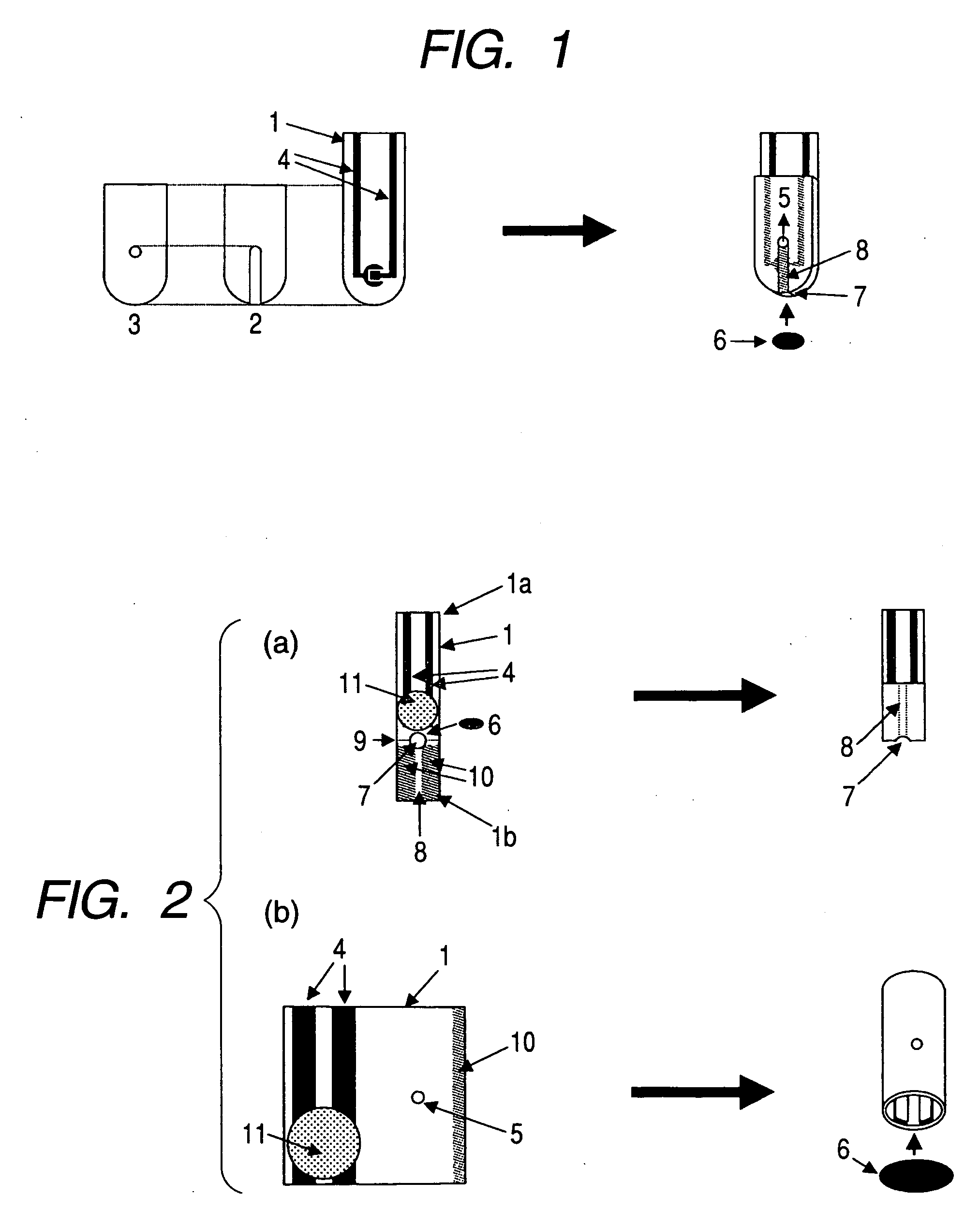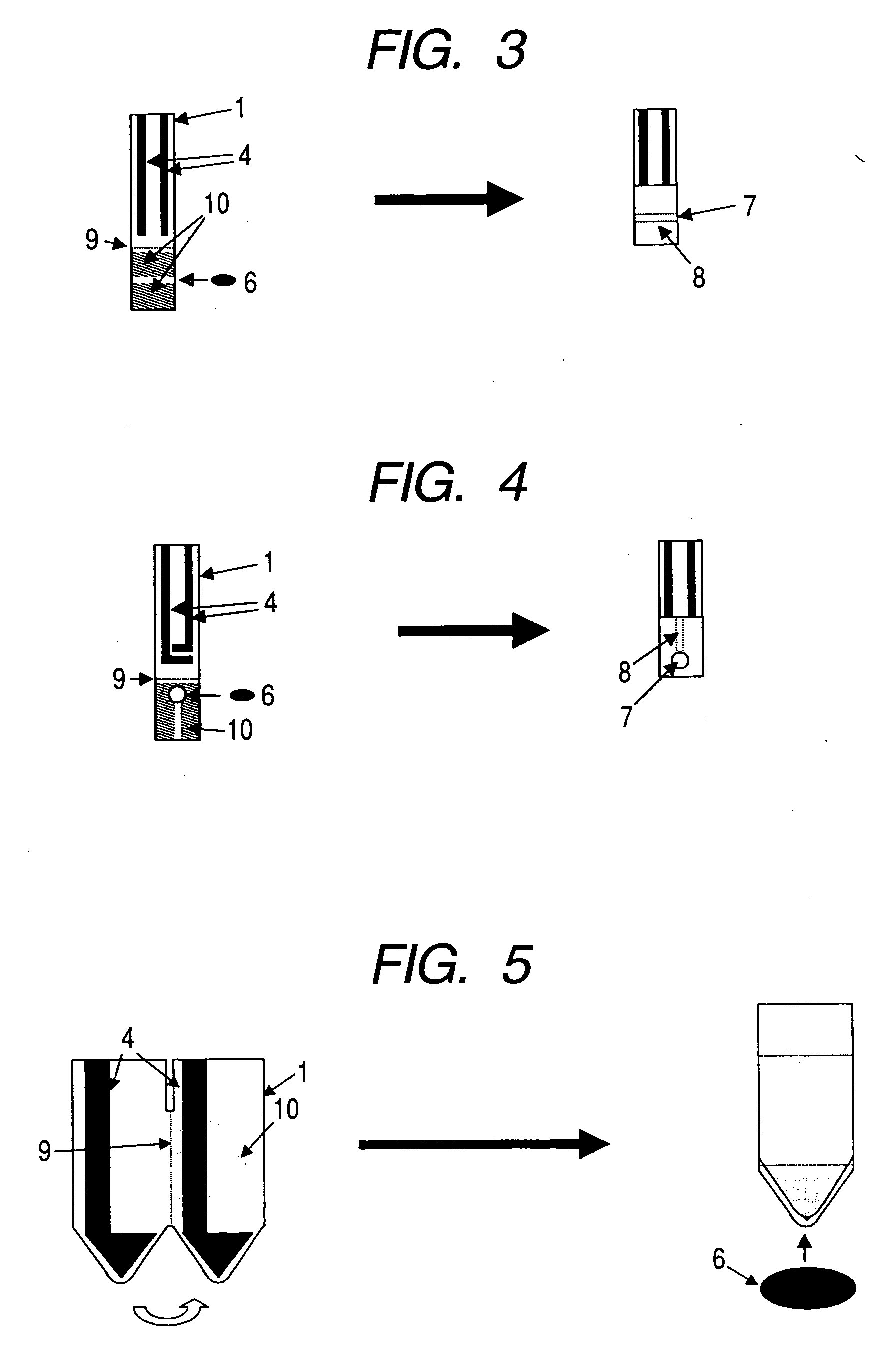Biosensor and production method therefor
a biosensor and production method technology, applied in the field of biosensors, can solve the problems of poor product producibility, many steps and many materials in the production of the sensor, and many materials, and achieve the effects of reducing environmental load, good producibility and economic aspects, and accurate measuremen
- Summary
- Abstract
- Description
- Claims
- Application Information
AI Technical Summary
Benefits of technology
Problems solved by technology
Method used
Image
Examples
example 1
[0225]FIG. 2(a) is a drawing showing a glucose sensor of an embodiment of the invention. As the reagent layer, used are glucose oxidase and potassium ferricyanide. The measurement principle of the glucose sensor shown in FIG. 2(a) is as follows:
[0226] In the present sensor, a sample is introduced into it through its sample inlet port by capillarity. Thus introduced, the glucose solution acts as follows: By the oxidation of glucose, ferricyanide ion is converted into ferrocyanide ion owing to the catalyst action of GOD in the reagent layer, as in the following formula 1:
GOD
Glucose+Ferricyanide Ion→Gluconolactone+Ferricyanide Ion [Formula 1]
[0227] The produced ferrocyanide ion is oxidized according to the electrode reaction of the following formula 2, on a carbon electrode, and is thereby electrochemically detected.
Ferrocyanide Ion→Ferricyanide Ion+e− [Formula 2]
[0228] According to the detection method of using the glucose sensor of the invention, the produced ferrocya...
example 2
[0234] In Example 1, a reagent layer of glucose oxidase and potassium ferricyanide was formed on the electrodes. In Example 2, it was formed not on the electrodes but on the cover part. This is described with reference to FIG. 2(a). The reagent layer was formed in a part of the cover part of the sample transfer path 8 between the adhesive layers 10 formed in the cover part. Example 2 is the same as Example 1 in point of the sensor substrate, the method of forming the enzyme / mediator reagent layer, and the measurement condition, except that the reagent layer was formed in the cover layer in the former. As a result, a current value change of from 1 to 3.0 μA was observed within a range of blood glucose of 50, 100, 200, 300, 400 and 500 mg / dl, almost similarly to that in FIG. 23. When a whole blood sample of 100 mg / dl was assayed 10 times, then the reproducibility of the measured values was 5.9% in terms of the fluctuation coefficient thereof.
PUM
| Property | Measurement | Unit |
|---|---|---|
| temperature | aaaaa | aaaaa |
| temperature | aaaaa | aaaaa |
| thickness | aaaaa | aaaaa |
Abstract
Description
Claims
Application Information
 Login to View More
Login to View More - R&D
- Intellectual Property
- Life Sciences
- Materials
- Tech Scout
- Unparalleled Data Quality
- Higher Quality Content
- 60% Fewer Hallucinations
Browse by: Latest US Patents, China's latest patents, Technical Efficacy Thesaurus, Application Domain, Technology Topic, Popular Technical Reports.
© 2025 PatSnap. All rights reserved.Legal|Privacy policy|Modern Slavery Act Transparency Statement|Sitemap|About US| Contact US: help@patsnap.com



